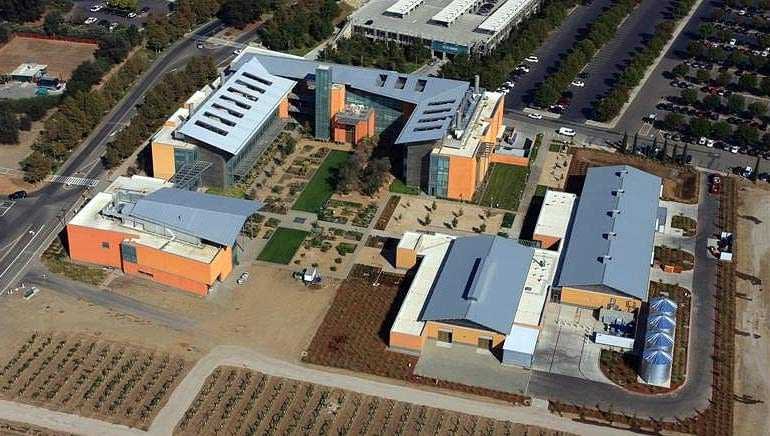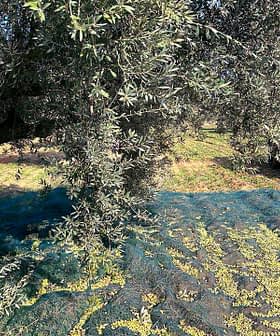
When UC Davis Olive Center director Dan Flynn met International Olive Council director Jean-Louis Barjol at an event in Chile last October, they came up with the idea to organize a meeting of American olive oil industry stakeholders coinciding with the Winter Fancy Food Show.
It was an unlikely gathering. Representatives from California olive oil producers met with major olive oil importers for three and a half hours on the University of California at Davis campus last week to discuss the common challenges facing the industry and find ways to cooperate.
Four years ago, it was Flynn’s team of researchers, funded by local producers, who published the bombshell report that found most imported oils sold on the shelves of California supermarkets to be substandard. That unleashed similar investigations around the world, sparked a debate on olive oil quality, gave rise to a flurry of negative marketing campaigns and likely turned some consumers off to olive oil altogether. Barjol condemned the report’s “undercurrent of aggression” at the time.
Flynn moderated the Davis meeting, attended by representatives of some of the companies implicated in his report — Pompeian, Borges, Colavita, Sovena and Deoleo — and the largest American producers who used the 2010 study as a centerpiece in their efforts to lobby for stricter quality standards, enforcement and import restrictions.
To prevent a free-for-all, according to several attendees, some ground rules were set for the January 16 meeting: There would be no dwelling on the issues the sides routinely disagree on. Instead, the focus would be on common areas of concern and finding ways to work together, especially to increase consumption in the world’s biggest market.
The meeting marked the beginning of a dialogue that IOC director Barjol has been advocating since he began his tenure at the intergovernmental agency in 2010, and now needs more than ever. And he reportedly came to Davis determined to get the sides to agree to a list of items that together served to bring the U.S. into the IOC fold, if only in small, symbolic increments.
The council is doing some soul-searching as it drafts a new governing agreement, or charter, to take effect on January 1, 2015. Barjol has made U.S. membership in the IOC a priority of his administration, even while the U.S. government has offered little hope. In fact, according to the International Trade Commission report, the U.S. “would like to curb membership in such groups.”
Perhaps succumbing to that reality, Barjol managed to get the group of Davis attendees, that was stacked on the side of importers, to agree to recommend an entity to be an “observer” at the Council. However, as one attendee noted, once the U.S. joins the ranks of observers, the IOC might choose in its new bylaws to amend the status of observers in order to further an agenda with tacit support from American producers.
But a priority on every list in the Davis meeting was to lift the paltry American olive oil consumption, and recent data showing U.S. imports slipping only served to enhance an overall sense of urgency felt by all sides.
In interviews, people who attended the meeting spoke in measured tones and scripted remarks about setting aside differences, finding common ground and beginning an open dialogue that was long overdue.
The attendees of the meeting were: Jean-Louis Barjol (International Olive Council), Richard Cantrill (American Oil Chemists’ Society), Eryn Balch (NAOOA), Bob Bauer (NAOOA), Patti Andrade (Borges), Giovanni Colavita (Colavita), Jaime Carbo (Deoleo), Frank Patton (Pompeian), Steve Mandia (Sovena), Patty Darragh (COOC), Bruce Golino (COOC), Kimberly Houlding (AOOPA), Brady Whitlow (Corto Olive), Adam Englehardt (California Olive Ranch), Mike Forbes (California Olive Ranch), Dan Flynn (UC Davis) and Selena Wang (UC Davis).
All together, the room represented nearly 100 percent of the olive oil Americans consume, and even a significant portion of global olive oil production. Deoleo, Sovena and Borges are among the world’s largest producers of olive oil who likely produce more in an hour than the United States produces all year.
According to a summary of the meeting, that there were no plans to release publicly, the group dabbled in a few of the major points of contention that have kept them on their respective coasts until now, such as standards and enforcement, and they were content to agree to disagree:
“There was discussion related to the lack of fraud enforcement as well as issues related to the cost and mode of enforcement,” according to the notes, “but no specific consensus emerged.”
Likewise, “There was discussion related to involving the FDA in US olive oil standards and to the periodic updating of US standards but no specific consensus emerged.”
There was agreement for U.S. “institutions” (presumably the UC Davis Olive Center and AOCS) to participate in European research projects, and all sides agreed to explore participating in a USDA marketing program.
There was little indication that the meeting represented a softer position by domestic producers led by California Olive Ranch who financed the 2010 Davis exposé, pushed for a $2 million investigation into olive oil industry by the United States International Trade Commission, drafted (and denied) a domestic marketing order and lobbied for a failed attempt to include a provision in the Farm Bill that would have subjected imported olive oils to higher standards if a marketing order were some day adopted.
For their part, the importers and suppliers of most of the 300,000 tons of olive oil consumed here each year gave no signals, according to meeting attendees, that the dismal quality of olive oil in the mass market was about to change any time soon, and there was a collective shrug in response to concerns over subsidies that allow European farms to flood the market at prices below production costs.
One attendee characterized the divide between the sides who met in Davis as no less than an ideological “gulf.” But for a few hours last week, there was at least a strain of optimism and the possibility that some day the widespread fraud, negative campaigning and mounting consumer confusion about olive oil might be replaced by simplified messages of health benefits, taste characteristics and culinary uses.








